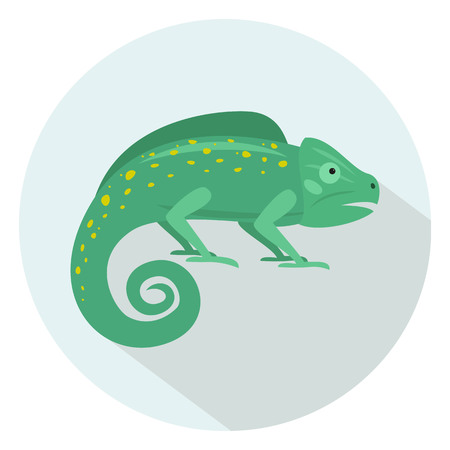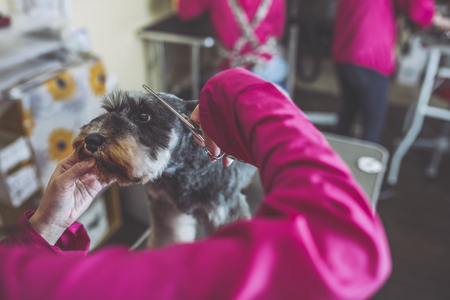Understanding Why Nail Trimming Matters
When it comes to caring for your small pet, whether it’s a rabbit, guinea pig, hamster, or even a tiny ferret, nail trimming is often overlooked. However, keeping your pet’s nails at an appropriate length is vital for their health and comfort. Overgrown nails can cause a lot more trouble than you might think. Not only do they make it difficult for your pet to walk or climb normally, but they can also lead to painful injuries if the nails snag on bedding or wire cages. In some cases, nails that are too long will curl under and grow into the paw pads, causing infections or chronic pain. For active pets, untrimmed nails may also change the way they move, affecting their posture and joint health over time.
Regular nail trims help prevent these issues and make daily life more comfortable for your pet. You’ll notice they’re able to explore and play more confidently when their nails are kept short and healthy. Plus, by making nail care part of your pet’s routine, you’ll be able to spot any other issues with their feet or legs early on—an important part of responsible pet ownership in the U.S. If you’ve ever heard the gentle click-click of nails on a hardwood floor or noticed your furry friend chewing at their paws, it might be time for a trim. Understanding why this simple task matters sets the stage for learning how to do it safely at home.
Choosing the Right Tools
When it comes to trimming your small pet’s nails at home, selecting the appropriate tools is crucial for both safety and effectiveness. American pet stores carry a variety of nail clippers and files designed specifically for small pets like rabbits, guinea pigs, ferrets, and small breed dogs or cats. Here’s what you need to know before making your choice:
Types of Nail Clippers and Files
| Tool Type | Description | Best For |
|---|---|---|
| Scissor-Style Clippers | Resemble small scissors with rounded tips; provide precise control. | Small dogs, cats, rabbits, guinea pigs |
| Guillotine-Style Clippers | Features a hole where the nail is inserted and a blade that slices when squeezed. | Small breed dogs, some cats |
| Nail Grinders/Files | Battery-operated rotary tools that gently grind down the nail. | Nervous pets or those with very tough nails |
| Manual Nail Files | Fine-grit files used to smooth sharp edges after clipping. | All small pets (for finishing touches) |
What to Look for in Safe, Effective Tools
- Size Appropriateness: Choose clippers that fit comfortably in your hand and are sized for your pet’s nails. Oversized tools can be hard to control on tiny paws.
- Non-Slip Handles: Opt for ergonomic grips to prevent slipping while you work.
- Sharp Blades: Dull blades can crush or split nails, so always check for sharpness and replace or sharpen as needed.
- Safety Guards: Many American brands offer clippers with built-in guards to help avoid cutting too deep into the quick (the sensitive part of the nail).
- Quality Materials: Stainless steel blades resist rusting and stay sharp longer—a must for consistent results.
Popular Brands in American Pet Stores
You’ll find brands like Safari, Millers Forge, and Dremel widely available at retailers such as PetSmart, Petco, Chewy, and local independent stores. These brands are trusted by many pet owners and groomers for their reliability and ease of use.
A Note on Human Nail Clippers
Avoid using human nail clippers unless recommended by your veterinarian—these may not provide the proper angle or strength needed for animal nails and can increase the risk of injury.

3. Prepping Your Pet and Setting the Scene
Before you even pick up the nail clippers, it’s important to set the right mood and environment for your pet. Start by choosing a quiet, comfortable spot in your home where you and your pet both feel relaxed. A well-lit area is key—good lighting helps you see each nail clearly, reducing the risk of accidental cuts. Consider laying down a towel or non-slip mat to help your pet feel secure and prevent slipping.
Calming Your Pet
Every animal is different, but most respond well to gentle reassurance. Spend a few minutes petting or talking softly to your small pet before starting the trim. If your pet is especially nervous, try playing some calming music or offering their favorite blanket for comfort. You might even let them sniff and inspect the nail trimmers so they know there’s nothing to fear.
Treats as Positive Reinforcement
Keep a stash of treats close by! Offering a treat before, during, and after nail trims can turn an intimidating task into a positive experience. For pets like rabbits, guinea pigs, or ferrets, use small pieces of their favorite veggies or store-bought treats designed for their species. Treats help distract your pet and reward calm behavior throughout the process.
Safety First
Double-check that all your tools are within reach and in good working order before you start. This prevents unnecessary pauses, which could make your pet anxious. If possible, ask a friend or family member to gently hold or distract your pet while you trim their nails—two sets of hands make the job smoother and safer for everyone.
By preparing thoughtfully and using plenty of positive reinforcement, you’ll set the stage for a stress-free nail trimming session that keeps both you and your small pet calm and safe.
4. Step-by-Step Nail Trimming Guide
Trimming your small pet’s nails at home doesn’t have to be intimidating. With a little patience and the right technique, you can help your furry friend stay comfortable and healthy. Here’s a straightforward, step-by-step guide designed for safety and ease:
Step 1: Prepare Your Tools and Environment
- Gather everything you’ll need: pet nail clippers (guillotine or scissor-style), styptic powder (in case of accidental bleeding), treats, and a towel.
- Find a quiet, well-lit space where your pet feels safe and calm.
Step 2: Securely and Gently Hold Your Pet
- For smaller pets like rabbits or guinea pigs, gently wrap them in a towel “burrito” style to keep them snug and prevent sudden movements.
- If you’re trimming a small dog’s nails, have them sit or lie comfortably on your lap or a non-slip surface.
- Use calm, reassuring words and gentle strokes to help your pet relax.
Step 3: Identify the Quick
- The quick is the pinkish area inside the nail that contains nerves and blood vessels. Avoid cutting it!
- In pets with clear or light-colored nails, the quick is easy to spot. For dark nails, trim very small amounts at a time to avoid hitting the quick.
| Nail Type | How to Spot the Quick |
|---|---|
| Clear/Light Nails | Look for the pink section—stop before reaching it. |
| Dark Nails | Trim tiny slivers; look for a grayish oval at the center as you cut, which means you’re getting close. |
Step 4: Trim With Confidence
- Hold the paw firmly but gently. Make sure your fingers are away from the clipper blades.
- Trim only the tip of each nail—just enough to remove the sharp point.
- If your pet gets anxious, take breaks and offer treats for positive reinforcement.
- If you accidentally nick the quick and bleeding occurs, apply styptic powder immediately with gentle pressure.
Pro Tip:
If you’re new to nail trimming or feeling unsure, trim just one or two nails at a time. Spread out sessions over several days so both you and your pet can build confidence together.
5. What to Do If You Accidentally Cut the Quick
Even with your best efforts and steady hands, accidents can happen when trimming your small pet’s nails. If you accidentally nick the quick—the sensitive part inside the nail that contains blood vessels and nerves—don’t panic. Staying calm is key for both you and your pet. Your furry friend will look to you for reassurance, so take a deep breath and speak in a soothing voice.
Managing Minor Bleeding at Home
Most minor bleeding from cutting the quick can be managed easily with basic household first aid supplies. Keep styptic powder or a styptic pencil handy before you start trimming; this is the fastest way to stop bleeding. If you don’t have styptic powder, cornstarch or flour can be gently pressed onto the tip of the nail to help clot the blood. Apply gentle pressure for a few seconds until the bleeding slows and stops. Avoid wiping away blood repeatedly, as this can prevent clotting.
Keeping Your Pet Comfortable
If your pet seems startled or anxious, offer treats and extra cuddles to help them settle down. You might want to pause the nail-trimming session and give your pet a break, especially if they’re stressed.
When to Call Your Veterinarian
Most quick cuts are minor and heal quickly, but keep an eye on your pet for continued bleeding, limping, or signs of pain. If bleeding doesn’t stop after a few minutes, or if you notice swelling or infection later on, it’s time to call your local vet for advice. Remember: accidents happen to even experienced pet parents, so don’t be too hard on yourself. With practice and patience, nail trims will become easier and less stressful for everyone involved.
6. Establishing a Routine and Keeping Your Pet Comfortable
When it comes to nail care, consistency is key for both your pet’s well-being and your peace of mind. Most small pets benefit from having their nails trimmed every 3-4 weeks, though the ideal frequency can vary depending on their activity level and the surfaces they walk on. By establishing a regular schedule, you’ll prevent overgrown nails and make each trimming session less stressful for both you and your pet.
Use Positive Reinforcement
Building trust starts with positive experiences. Reward your pet with treats, gentle praise, or extra playtime after every successful nail trim—even if you only manage one or two nails at first. Over time, your pet will begin to associate nail care with good things, making future sessions smoother. Patience pays off; never force the process or rush through it. If your pet gets anxious, take a break and try again later.
Make Nail Trimming Part of Your Routine
Incorporate nail checks into other parts of your regular care routine, such as weekly brushing or health checks. The more familiar nail trims become, the less intimidating they’ll be for your furry friend. Try to trim nails in the same calm, comfortable space each time to help your pet feel secure.
Build Trust Over Time
Your relationship with your pet is built on trust, and that extends to grooming tasks like nail trimming. Be gentle, speak softly, and use slow movements to help keep them relaxed. With patience and a positive approach, nail care will soon become just another part of keeping your small pet happy and healthy.


